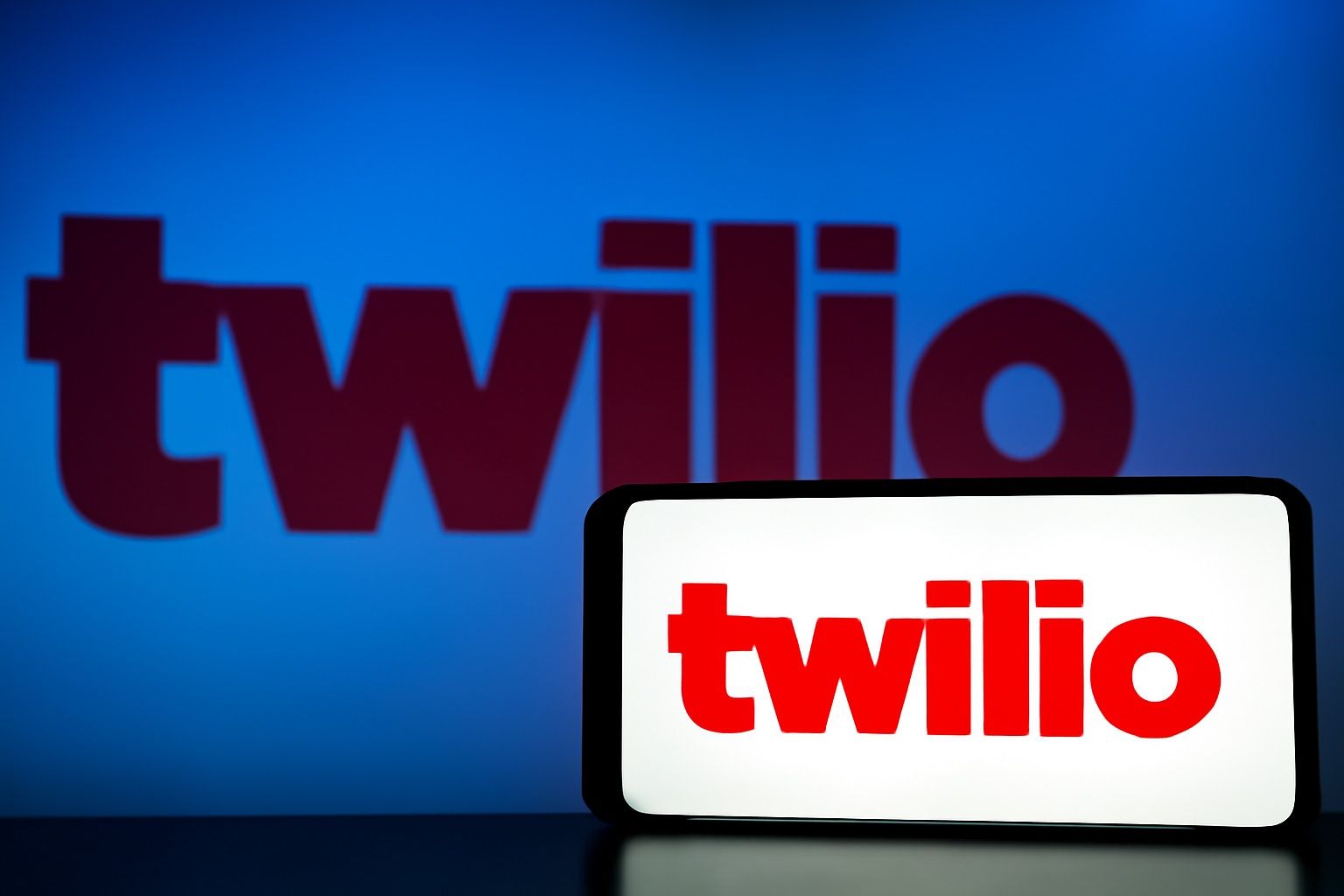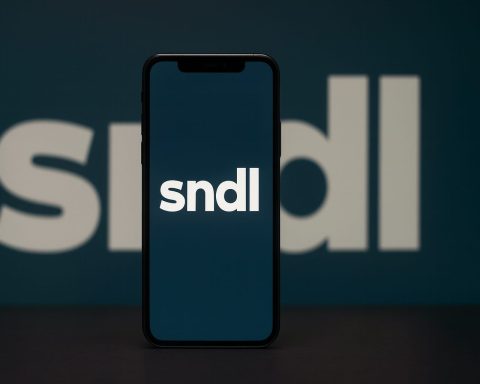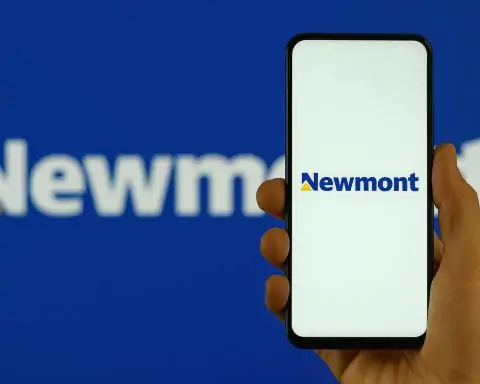- Surging Share Price: Twilio Inc. (NYSE: TWLO) stock spiked on October 31, 2025, rising about 11% pre-market to $125.5 and up over 18% intraday to roughly $133 following its earnings beat [1] [2]. Prior to the jump, Twilio had been relatively flat, up only ~4% year-to-date versus a ~12% broader market gain [3].
- Q3 Earnings Beat Estimates:Q3 2025 revenue hit $1.3 billion (+15% YoY), topping consensus of ~$1.25 billion [4]. Adjusted EPS was $1.25, up ~22% YoY, beating forecasts of ~$1.06–1.08 [5] [6]. Twilio also swung to a GAAP profit ($40.9 M net income vs a loss a year prior) [7], with free cash flow of $247 M in the quarter [8].
- Raised Guidance Fuels Optimism: Twilio raised its full-year 2025 outlook, now projecting 12.4%–12.6% revenue growth (up from ~10% prior) and stronger profitability [9] [10]. Q4 guidance of $1.31–1.32 B revenue and $1.17–$1.22 EPS also exceeds Wall Street estimates [11]. The company is on track for ~$920–930 M in 2025 free cash flow, beating earlier targets [12].
- Customer Base & Growth Drivers: Twilio’s active customer accounts jumped to 392,000, up 22% from 320,000 a year ago [13]. Importantly, existing clients are expanding usage – Twilio’s dollar-based net expansion rate reached 109% in Q3 (up from 105% last year) [14], signaling increased spend by customers. Management cited “broad-based strength across startups, enterprises and ISVs” choosing Twilio’s platform [15].
- Analysts Turn Bullish (Mostly): A flurry of price target upgrades followed the results. For example, Morgan Stanley raised its target to $154 (Overweight) [16], Goldman Sachs to $150 (Buy), Needham to $145 (Buy) [17], and KeyBanc to $156 (Overweight) [18]. One boutique firm issued a Street-high $175 target [19]. The analyst consensus rating is “Buy” with a median target around $135 [20]. However, a few remain cautious – e.g. BofA Securities nudged its target to $110 but kept an Underperform rating, and RBC Capital stays at $75 (Underperform) as a bearish outlier [21] [22].
- Financial & Competitive Context: Now led by CEO Khozema Shipchandler (appointed 2024 amid activist pressure to improve performance) [23], Twilio has notched four consecutive quarters of accelerating growth [24] while pivoting toward profitability. Gross margins (~50%) remain pressured by carrier fees [25], but Twilio’s balance sheet is strong (ample cash, no net debt) [26]. As the leading CPaaS (communications-platform-as-a-service) provider, Twilio competes with firms like Infobip, Sinch, Vonage, and big-cloud rivals (AWS, Azure Communications) entering the space [27] [28]. Its ~15% revenue growth now outpaces larger peers like Salesforce (~10%) and Zoom (~4%) [29], though Twilio’s market cap (~$17–18B) and margins are much smaller by comparison.
Twilio’s headquarters building with company logo. The company, founded in 2008, has grown into a leading cloud communications platform (CPaaS) that provides developers with APIs for messaging, voice, video, and other digital communications [30]. Under new CEO Khozema Shipchandler, Twilio has focused on “profitable growth,” streamlining its business (including the Segment data platform unit) and investing in AI capabilities to enhance its customer engagement tools. [31] [32]
Q3 2025 Blowout Results & Improved Outlook
Twilio’s third quarter 2025 results handily beat expectations and marked significant improvements in growth and profitability. Revenue was $1.30 billion, up ~14.6% year-on-year [33], accelerating from prior quarters and exceeding the $1.25 B consensus estimate [34]. This was Twilio’s fastest growth in over a year, driven by broad usage gains across its communication APIs. The 15% reported growth (13% organic) continues an accelerating trend of double-digit expansion as Twilio laps past restructuring efforts [35]. On the bottom line, Twilio delivered $1.25 in adjusted EPS, a ~22% jump from $1.02 a year ago and nearly 18% above analyst forecasts (~$1.06) [36] [37]. In GAAP terms, Twilio turned profitable – posting $40.9 M in net income ($0.23/share) versus a small loss in Q3 2024 [38].
Crucially, Twilio’s operating efficiency and cash generation improved. The company reported $263.6 M in operating cash flow and $247.5 M in free cash flow for Q3, both up significantly year-on-year [39]. Twilio’s adjusted operating margin and net margin have swung into positive territory (net margin ~1.8% as of mid-2025) after years of losses [40]. Gross profit margin stands around 50% [41] – relatively low for a software company due to telco fees on messaging – but management expects margin stabilization as it optimizes pricing and product mix [42]. Twilio’s balance sheet remains solid, with the company holding more cash than debt [43], giving it flexibility to invest in growth initiatives.
Customer metrics were a highlight this quarter. Twilio’s active customer accounts grew to 392,000, up from ~320,000 a year ago [44]. This ~22% increase reflects both new client wins and expansion within existing clients. In fact, Twilio’s dollar-based net expansion rate hit 109%, meaning the same customers spent ~9% more on Twilio’s platform compared to last year [45]. This is an uptick from 105% a year ago, indicating improved retention and upsell. CEO Khozema Shipchandler noted “broad-based strength across customer segments, ranging from startups to enterprises to ISVs, that continue to choose Twilio to power their customer engagement” [46]. Growth was “mid-teens” in voice services and high-teens in messaging usage, according to Morgan Stanley’s analysis [47] – showing that both of Twilio’s core channels are seeing robust demand. Early adoption of Twilio’s new AI features is also evident: the number of “AI voice” customers rose 60% year-over-year, and Twilio’s top 10 customers grew usage tenfold, hinting at emerging large-scale use cases [48].
Thanks to the strong results, Twilio’s management raised guidance for the fourth quarter and full year 2025. For Q4, Twilio now expects $1.31–1.32 B in revenue and $1.17–$1.22 in adjusted EPS, above the prior consensus (~$1.29 B and $1.14 EPS) [49]. For full-year 2025, Twilio is boosting its outlook across the board: reported revenue growth is now forecast at 12.4%–12.6% (vs. 10%–11% before), which implies ~$4.8 B annual revenue [50]. Organic revenue (excluding past acquisitions) is expected to rise 11.3%–11.5% [51]. Twilio also raised its profitability targets – it now projects $900–910 M in adjusted operating profit (up from $850–875 M) and $920–930 M in free cash flow (up from $875–900 M) for 2025 [52]. These revised targets significantly exceed analysts’ previous expectations (for example, analysts had expected ~$868 M op. profit and ~$885 M FCF) [53], underscoring management’s confidence in sustained momentum.
The market welcomed the news enthusiastically. Twilio’s stock, which closed at $112.86 on October 30, jumped about 7% after-hours to ~$123 once the results and guidance were out [54]. By the next morning (Oct 31), the rally intensified – shares opened up over 10% and by mid-morning were trading around $131–133 (≈+18%) on heavy volume [55] [56]. This marks one of Twilio’s biggest single-day moves in recent years. It’s a sharp reversal of sentiment from earlier in 2025, when Twilio’s stock had languished amid tech sector volatility and questions about its growth trajectory.
Wave of Analyst Upgrades and Price Target Hikes
Wall Street analysts reacted swiftly to Twilio’s stellar quarter and improved outlook, largely reinforcing a bullish stance on the stock. Within hours of the earnings release, at least half a dozen firms raised their price targets for TWLO, often into the mid-$100s, and reiterated positive ratings:
- Morgan Stanley maintained an Overweight rating and boosted its target from $152 to $154 [57]. The firm highlighted that Twilio’s organic revenue growth beat guidance by ~4.5 percentage points, with strength “across channels and products” – notably mid-teens growth in voice and high-teens in messaging – driving the upside [58]. Morgan Stanley expressed “increased confidence in Twilio’s ability to execute double-digit growth with margin stabilization and improvement over time,” arguing this is underappreciated at the current valuation (around 15× enterprise value to FCF) [59].
- Goldman Sachs reiterated a Buy and raised its target to $150 (from the low $140s) after Twilio’s beat [60]. Needham & Co. also cited the strong Q3 in upping its target to $145 (Buy) [61]. KeyBanc Capital (KeyCorp) likewise lifted its target to $156 with an Overweight rating, noting the quarter’s broad-based strength and implying significant upside from the ~$125 level [62].
- Several other banks followed suit: Wells Fargo resumed coverage with an Overweight and ~$130 target [63], Monness Crespi Hardt – known for aggressive calls – reiterated a Buy and put out a Street-high $175 target [64], and Mizuho raised its target to $150 (Outperform) in solidarity with the bullish outlook [65]. Rosenblatt Securities reaffirmed its Buy rating and $140 target, citing Twilio’s successful push into higher-margin customer engagement tools on top of its core messaging APIs [66].
By contrast, a couple of skeptics held their ground. Bank of America did increase its price target from $100 to $110, acknowledging Twilio’s results beat their estimates, but kept an “Underperform” rating – effectively a bearish call that implies ~15–20% downside from current prices [67]. BofA has been cautious on Twilio, and even after this quarter they cite lingering concerns (discussed below) that temper their outlook. Similarly, RBC Capital maintained its stark Underperform with a $75 target [68] – by far the lowest on the Street – signaling a view that Twilio’s recent rally may be overdone or that challenges lie ahead. This dissenting view represents a notable minority, but it’s a reminder that not all analysts are convinced.
Overall, the consensus on Twilio has shifted more bullish post-earnings. According to Reuters, out of 30 analysts covering TWLO, the average rating is now a “Buy” and the median 12-month price target is about $135 [69]. Benzinga’s compilation of recent analyst calls shows the average target increased ~4.7%, from ~$122 to $127.4 per share, after incorporating the new forecasts [70]. The targets now range widely – from RBC’s $75 low to highs of $154–$175 – reflecting differing time horizons and risk appetites [71] [72]. But with many reputable firms clustering in the $140s (roughly 10–15% above the current price), the sentiment skew is positive. As MarketBeat summarized, “a string of analyst price-target increases and buy/outperform ratings” is adding institutional conviction that Twilio’s shares have more room to run [73]. This wave of upbeat analyst commentary has itself been a catalyst for the stock’s momentum, creating a feedback loop of bullish news flow.
Several analysts specifically pointed to Twilio’s improving fundamentals and execution. For instance, UBS noted Twilio’s accelerating growth and maintained its Buy rating while raising its target to $150 (from $135) [74]. Piper Sandler, which had been moderately positive, bumped its target to ~$144 (Overweight) after the earnings call, highlighting Twilio’s strengthening large-customer metrics [75]. Even historically neutral observers are tilting positive: the Reuters poll indicates no analysts have a pure “Sell” on the stock now [76] – the bears are in the minority with “Underperform” tags, while over 2/3 of analysts rate Twilio a Buy or Outperform.
Consensus forecasts for Twilio’s future earnings have also been revised upward. The average 12-month price target in the high-$120s implies analysts see further upside, albeit more modest after the recent rally. In terms of financial projections, many now model Twilio to grow revenue at a low-teens percentage in 2025 and 2026 with expanding profit margins, which underpins their valuation estimates. For example, one analysis highlighted that if Twilio can sustain ~15% growth and improving free cash flow, the stock (around 15× EV/FCF and ~5× 2025 EV/Sales) looks reasonably valued or even inexpensive relative to its cloud software peers [77]. Of course, those projections will depend on Twilio hitting its targets – which is where the bull vs. bear debate comes in.
Bull Case: Long-Term Growth Runway, AI Upside & Profitability Leveraging
Bulls argue that Twilio is now hitting its stride after a period of reorganization, with significant long-term growth opportunities ahead. The Q3 results and raised guidance reinforced the narrative that Twilio’s core communications-platform business is robust and capable of sustainable double-digit expansion while generating real profits and cash flow – a potent combination.
Key pillars of the bull case include:
- Reaccelerating Revenue Growth: After a slowdown in 2022–2023, Twilio has now delivered multiple consecutive quarters of accelerating growth. Revenue growth stepped up from ~10% to 13% to 15% over recent quarters [78], suggesting that Twilio’s strategy tweaks (e.g. focusing on high-value customers and reducing less profitable projects) are bearing fruit. With management forecasting ~11–12% organic growth for 2025 [79], bulls see a credible path back to mid-teens growth or higher in coming years. Twilio’s huge base of 392k customers provides a foundation – even modest upsells and usage increases (as evidenced by the 109% net expansion rate) can add materially to revenue [80]. Morgan Stanley noted broad-based demand across channels and customer types, a healthy sign that growth isn’t reliant on one product or segment [81]. If Twilio can continue this trajectory, some analysts believe annual revenue could compound at double-digits for the foreseeable future, especially as digital communications expand worldwide.
- Operating Leverage & Profitability Focus: A major bullish point is Twilio’s successful pivot to profitability. After years of reinvestment and occasional losses, Twilio is now not only posting adjusted profits but also significant free cash flow ($900M+ expected in 2025) [82]. Its adjusted operating margin is improving faster than expected, and even GAAP profitability has been achieved ahead of some skeptics’ timelines. This indicates Twilio’s cost structure and pricing power have improved. Bulls highlight that Twilio’s gross margin (~50%) has room to rise as it optimizes carrier agreements and upsells more software (higher-margin products) alongside raw messaging volume. Morgan Stanley expects margin “stabilization and improvement over time”, seeing Twilio’s initiatives to cut costs and shift its mix to higher-value services as already working [83] [84]. With operating expenses now growing slower than revenue, incremental sales should drop to the bottom line at a higher rate. This could make Twilio dramatically more profitable at scale – e.g. KeyBanc estimated Twilio’s 2025 EPS could reach $4+, which at the current price would be a reasonable ~30× P/E for a growth tech name. The company’s strong balance sheet (over $4 B in cash) also means it can invest in growth or acquisitions without jeopardizing profitability [85].
- AI and High-Margin Expansion Opportunities: Bulls are excited about Twilio’s moves into artificial intelligence (AI) and data-driven applications, seeing these as new growth vectors layered on top of the core CPaaS platform. Twilio has rolled out features under its “CustomerAI” initiative, aiming to help clients personalize communication using AI insights. Early evidence is positive – Twilio noted a 60% YoY increase in AI-powered voice customers in Q3 [86]. Additionally, Twilio just announced a deal to acquire Stytch, Inc., an identity platform for AI agents, to bolster its capabilities in verified, secure AI-driven interactions [87]. This suggests Twilio is investing to be a leader in AI-enabled communication APIs. Tech analysts at TechStock² (ts2.tech) have pointed out that Twilio’s focus on AI and its “AI-enabled APIs” could significantly increase the platform’s value to enterprises, positioning Twilio as an “AI beneficiary” in cloud communications [88]. Twilio’s Segment customer data platform (CDP), acquired in 2020, also plays into this – integrating customer data with messaging allows AI to deliver more personalized engagement. While Segment’s growth has been slower, it provides Twilio a differentiated offering (combining data + communication) that pure-play competitors lack. If Twilio can reinvigorate Segment (perhaps by targeting use-cases in marketing automation or leveraging AI for customer insights), it could unlock cross-selling potential across its installed base. Bulls argue that Twilio’s end-to-end portfolio – data, communication APIs, contact-center tools, and now AI – gives it a competitive edge and the ability to move upmarket with bigger enterprise deals.
- Large and Expanding Market (CPaaS): The overall demand for cloud-based communications services remains strong. The secular trends of digital customer engagement, app-based services, and omnichannel communication all work in Twilio’s favor. Independent research firms rank Twilio as the #1 CPaaS (Communications-Platform-as-a-Service) provider globally, ahead of rivals [89]. GlobalData recently identified Twilio (along with Infobip) as the leading CPaaS vendors, especially as telcos and enterprises turn to cloud APIs for messaging, voice, and two-factor authentication traffic [90] [91]. The CPaaS market is still growing at an estimated ~20% CAGR, and Twilio is the established platform of choice for many developers and companies. Bulls believe Twilio can capture a good share of this growth, leveraging its scale – it delivers over 1.7 trillion interactions per year (as of early 2024) [92] – and its reputation for reliable, easy-to-use APIs. As long as Twilio keeps developers happy (through superior tools, network reach, and now AI add-ons), it should maintain its leadership and pricing power. Twilio’s partnerships and ecosystem (the “Super Network” of carrier links worldwide) are also hard to replicate [93], creating a moat against smaller competitors.
- Underappreciated Value & Upside Potential: Even after the recent rally, some bulls say Twilio’s stock does not fully reflect its improved fundamentals. The stock is still well below its all-time highs from 2021, and Twilio now is a very different company (profitable, disciplined, and focused). Valuation metrics appear reasonable for a growth stock – for instance, ~4.5× forward revenue and ~15× forward EV/FCF [94] are not stretched for a company expected to grow ~12%–15% with expanding margins. Comparatively, many cloud software peers trade at higher multiples with slower growth. This has led analysts like Morgan Stanley to argue Twilio is “underappreciated” at current levels [95]. The high-end price targets in the $150s–$170s imply significant upside if Twilio executes. A forecast from Tikr.com even noted that some analysts see 32% upside by 2027 as Twilio’s revenue growth and margin expansion compound over the next two years [96]. Additionally, Twilio’s management has been buying back stock (Twilio initiated share repurchases in 2023), which could provide support and boost shareholder value longer-term. All told, bulls envision Twilio continuing to rise as earnings grow – potentially reclaiming a $150+ stock price as it proves the doubters wrong.
To illustrate the bullish sentiment, ts2.tech (TechStock²) recently featured Twilio as one of “Two Growth Stocks to Buy with $1,000 Now,” citing its attractive valuation after strong gains and its leverage to the AI boom. The piece highlighted that Twilio “boosted its AI-enabled APIs” and achieved a 107% net expansion rate in Q1 2025, signaling that existing customers are finding more value in Twilio’s offerings [97]. It argued that owning well-positioned AI beneficiaries like Twilio could pay off over the long term despite near-term volatility [98]. This encapsulates the bullish view: Twilio is seen as a high-quality growth company at the intersection of cloud communications and AI, now with a proven ability to generate cash – a combination that could lead to outsized returns for patient investors.
Bear Case: Competition, Margin Pressures & Execution Risks
Despite the many positives, bears and skeptics caution that Twilio still faces significant challenges that could limit upside or even undermine the recent gains. The presence of a few high-profile Underperform ratings (e.g. BofA and RBC) underscores that not everyone is convinced the turnaround will be smooth. Key concerns in the bear case include:
- Intensifying Competition in CPaaS: Twilio’s leadership in communications APIs is constantly under threat as competitors and new entrants jostle for market share. Established rivals such as Infobip, Sinch, Vonage (Ericsson), Bandwidth, RingCentral and others offer similar messaging/voice API services, often competing on price or local presence. For example, Sinch (Sweden) has grown via acquisitions to challenge Twilio in international markets [99], and Vonage (now part of Ericsson) is leveraging a telecom giant’s resources to attract enterprise clients. Furthermore, big tech is encroaching: platforms like Microsoft’s Azure Communication Services and Amazon’s AWS (Connect) provide communication APIs integrated with their cloud ecosystems [100]. Even telecom carriers themselves are partnering to offer CPaaS solutions or integrating network APIs (as GlobalData noted, telcos like AT&T/Verizon globally are collaborating with CPaaS players) [101] [102]. This crowded competitive landscape could pressure Twilio’s growth and margins. Bears point out that some of Twilio’s larger customers (like big tech firms) might choose to develop in-house solutions or use lower-cost providers for commoditized services, limiting Twilio’s ability to raise prices. In Gartner’s latest rankings for customer engagement platforms, Twilio is highly rated but alternatives like Vonage, Cisco (Webex Connect), Infobip, Sinch, and even AWS/Azure were all in consideration by enterprises [103]. With so many options, Twilio must continue innovating just to maintain share. Any sign of market share loss or pricing pressure – for instance, if Twilio’s revenue growth slips below industry growth rates – would bolster the bear case that its moat is not as wide as bulls think.
- Reliance on Low-Margin Messaging & Carrier Costs: A structural issue is that a large portion of Twilio’s revenue comes from messaging (SMS, etc.), which carries telecom fees that compress gross margins. Twilio’s gross margin (~50%) is far lower than pure software SaaS companies (which often have 70-80% margins). Bears note that Twilio’s gross margin actually declined in recent years due to higher carrier fees and A2P (application-to-person) SMS surcharges, especially in the US [104]. While Twilio is working to stabilize margins via product mix (e.g. promoting email, voice, and software offerings with better margins) [105], it may be inherently tough to push gross margin much higher as long as messaging volumes dominate – and messaging is still Twilio’s largest revenue component [106]. In Q3, Twilio’s adjusted gross profit was strong (beat estimates) [107], but bears worry that further expansion could slow if carrier costs rise or if Twilio needs to cut usage prices in response to competition. Profitability could thus hit a ceiling, capping how much earnings can grow relative to revenue. Moreover, Twilio’s net profit margin is still only ~1–2% on a GAAP basis [108] – any stumble in revenue growth or slight uptick in costs could push it back toward break-even. In short, skeptics argue that Twilio’s business model, while now profitable, isn’t as inherently high-margin or scalable as other cloud software firms, which could warrant a lower valuation multiple.
- Slower Growth & Questions on Addressable Market: Even at 12–15% growth, Twilio is growing more slowly than during its hyper-growth phase (2016–2019 when revenues often grew 40%+). Bears question whether Twilio’s core market is maturing. Many large enterprises have already adopted CPaaS solutions, and usage growth might normalize. Twilio’s historical dollar-based net expansion was well above 120% in its peak years, but has now settled around 105–110%, indicating existing customers aren’t expanding as rapidly as before (possibly because they’ve scaled usage or alternatives exist). RBC Capital’s $75 target presumably assumes Twilio’s growth decelerates again – RBC’s analyst Rishi Jaluria has argued that Twilio’s growth is below the average for the software sector and even below some communications peers [109]. In fact, Twilio’s ~13.5% revenue growth (as of mid-2025) was slightly lower than the average growth among information technology companies, according to comparative data [110]. This raises the concern that Twilio’s best growth days are behind it, limiting upside. If Twilio’s revenue growth were to slip back to single digits in a couple of years (due to saturating usage in key customers or losing deals to competitors), the stock could struggle. Bears also point to the law of large numbers – Twilio’s annual revenue is approaching $5 B; sustaining high growth at that scale may require entering new markets or significant new product success (like Twilio Flex contact center or Segment CDP), which are not guaranteed.
- Execution Risks – Segment Integration and Product Mix: Twilio’s expansion beyond pure APIs into applications (Flex contact-center, Segment data platform, marketing tools) has had mixed results. The Segment unit’s revenue growth has been underwhelming, even declining in recent quarters [111], as noted by independent analysts. Twilio paid $3.2 B for Segment in 2020 to get into customer data platforms, but integrating that business and generating cross-sell with the API customer base has proven challenging. Activist investors (such as Legion Partners and Anson Funds) earlier in 2024 pressured Twilio to consider divesting non-core pieces like Segment if they can’t pull their weight [112]. The activist involvement itself signals some shareholders’ frustration with Twilio’s pace of execution and stock performance pre-earnings. While no major breakup has occurred, Twilio’s management is under pressure to show that these acquisitions (Segment, Zipwhip, etc.) can contribute meaningfully. Bears worry that Twilio might be juggling too many initiatives – core CPaaS, a CDP platform, contact-center software (Flex), email (SendGrid), IoT messaging, and now AI – potentially diluting focus. If management execution falters or integration issues arise, growth could disappoint. The recent CEO transition also adds uncertainty: Khozema Shipchandler has been with Twilio for years (as CFO/COO) [113], but as the new CEO he faces a high bar to deliver results set by guidance. Any slip-up in upcoming quarters (e.g., a failure to meet the aggressive profitability targets or a slowdown in revenue despite raised guidance) could quickly sour investor sentiment again, given Twilio’s history of volatility.
- Valuation & Stock Volatility: From a valuation perspective, bears argue that Twilio’s stock isn’t necessarily “cheap” after the 18% pop – it now trades around 4.5× forward sales and 30× forward earnings, which leaves little room for error if growth slows. They also note that much of Twilio’s 2025 free cash flow ($900M+) comes from stock-based compensation add-backs, a common practice in tech but one that dilutes shareholders. If one subtracts SBC, true cash yield is lower. Macro factors could also impact Twilio – higher interest rates and a potential economic slowdown might crimp IT spending, especially on discretionary communication features or marketing, which could hurt Twilio’s usage-based model. Twilio itself acknowledged softer trends from some customers in past quarters when the economy was shakier. So if macro conditions worsen, bears see Twilio’s guidance as at risk.
Ultimately, the bear case posits that Twilio’s current optimism may be hard to sustain. The company must flawlessly execute its growth plan amid heavy competition, and any disappointment could result in a pullback. The fact that at least one major bank (BofA) still sees the stock as overvalued around $110 [114] underscores that downside scenarios are not off the table. For example, if Twilio were to return to single-digit growth or if margins plateau, a stock price closer to 4× sales (~$80-90) could be justified by bears’ models. In summary, from the skeptical viewpoint: Twilio has made commendable progress, but risks like competition, margin limits, and past execution issues mean investors should remain cautious about assuming the current high growth and improving profitability will continue unabated.
Outlook and Final Thoughts
Twilio’s latest results marked a turning point in market sentiment. The stock’s sharp rally in late October 2025 reflects renewed confidence that Twilio can successfully evolve from a pure growth story into a more balanced growth-and-profit story. With Q3’s beat and upbeat guidance, Twilio’s management has signaled that the company is delivering on promises – accelerating revenue, controlling costs, and capitalizing on new opportunities like AI. The short-term outlook is undoubtedly positive: the raised Q4 guidance and a slew of analyst upgrades indicate that Twilio is expected to carry solid momentum into the end of 2025. Many on Wall Street now view the company as being on a much stronger footing heading into 2026, with a clearer path to profitable growth.
That said, Twilio will be in the spotlight to sustain this performance. The stock’s volatile history (soaring during the pandemic and then crashing in 2022 before this recovery) means investors will be watching upcoming earnings closely to ensure Q3 wasn’t a one-off. The consensus forecast is for Twilio to continue growing at a low-teens rate in 2026 and further expand margins, which, if achieved, could indeed justify additional stock appreciation. Bulls see the potential for Twilio to even exceed those estimates given tailwinds like AI-driven usage and possibly an improving macro environment (if interest rates stabilize and enterprise spending picks up, communications volumes could rise). On the other hand, any hiccup – such as a guidance miss, growth downtick, or macro headwind – could revive concerns. The presence of activist investors in Twilio’s shareholder base means there is also the possibility of strategic actions (asset sales, etc.) if performance falters, which adds another layer of complexity to the outlook [115].
In a broader industry context, Twilio’s trajectory will also depend on how well it navigates the competitive landscape. The company remains the premier CPaaS platform, and as a Channel Futures report noted, Twilio (along with Infobip) is leading the market while adapting with AI and partnerships [116] [117]. Twilio’s initiatives in areas like trusted communications (fraud prevention, verified messaging) and AI integration could differentiate it and create new revenue streams, helping fend off commodity pricing pressures. The push for more “outcome-driven” solutions in communications – essentially delivering not just APIs but results (customer engagement, sales conversions, etc.) – is where Twilio’s combined platform (Segment + messaging + Email + AI) could shine if executed well [118] [119]. In other words, Twilio is trying to move up the value chain from just selling text messages to selling intelligent customer interaction capabilities. This strategy, if successful, bodes well for its long-term growth and margin expansion.
For investors, Twilio now presents a compelling yet challenging story. The company’s fundamentals have markedly improved in 2025, and the stock’s strong rally indicates the market’s recognition of that fact. The current price around the mid-$120s to $130 reflects a fair amount of optimism – but not exuberance – given the midpoint of analyst targets is slightly above this level. The upside scenario (bull case) could see Twilio climb further into 2026 if it delivers high-teens growth or new product wins; indeed, some price targets in the $150–$170 range suggest significant headroom if all goes well [120]. Conversely, the downside risks (bear case) remind that Twilio’s business is not without vulnerabilities, and a return to underperformance could re-rate the stock lower.
In summary, as of Q4 2025 Twilio appears to have regained Wall Street’s favor by executing on its pivot to profitable growth. The stock’s 18% surge on earnings [121] and the chorus of expert endorsements underscore the momentum behind Twilio’s story right now. Going forward, Twilio will need to keep proving itself – by hitting its ambitious targets, continuing to innovate (especially with AI), and navigating competition – to maintain this positive trajectory. Investors and analysts will be looking for consistency from Twilio after a historically volatile ride. If Twilio can string together more quarters like Q3 2025, the company could firmly establish itself as a top-tier cloud software player with a unique niche, and its stock may well continue to reward believers. But if challenges emerge, the mixed analyst opinions suggest the stock could quickly correct. Thus, Twilio enters 2026 with high expectations and a bit of a spotlight: it’s a show-me story now, backed by solid fundamentals and cautious optimism from experts. The next few quarters will be crucial in determining whether Twilio’s impressive late-2025 rally is the start of a sustained climb or just a temporary pop on the road to steadier progress.
Sources: Twilio investor reports and press release; Reuters/TradingView news brief [122] [123]; Investing.com (Morgan Stanley commentary) [124] [125]; Nasdaq/RTT News [126] [127]; Benzinga analyst recap [128] [129]; MarketBeat analysis [130] [131]; ts2.tech (TechStock²) market analysis [132]; MarketScreener/Finwire report [133] [134]; Channel Futures CPaaS industry report [135] [136]; Seeking Alpha news [137].
References
1. www.tradingview.com, 2. www.marketbeat.com, 3. www.tradingview.com, 4. www.marketscreener.com, 5. www.tradingview.com, 6. www.marketscreener.com, 7. www.nasdaq.com, 8. www.nasdaq.com, 9. www.tradingview.com, 10. www.marketscreener.com, 11. www.benzinga.com, 12. www.nasdaq.com, 13. www.tradingview.com, 14. seekingalpha.com, 15. www.benzinga.com, 16. www.investing.com, 17. www.investing.com, 18. www.marketbeat.com, 19. www.marketbeat.com, 20. www.tradingview.com, 21. www.marketbeat.com, 22. www.benzinga.com, 23. www.constellationr.com, 24. casselroad.com, 25. www.investing.com, 26. www.investing.com, 27. www.channelfutures.com, 28. www.gartner.com, 29. technologymagazine.com, 30. www.benzinga.com, 31. www.constellationr.com, 32. www.constellationr.com, 33. www.marketscreener.com, 34. www.marketscreener.com, 35. casselroad.com, 36. www.marketscreener.com, 37. www.marketscreener.com, 38. www.nasdaq.com, 39. www.nasdaq.com, 40. www.benzinga.com, 41. www.investing.com, 42. www.investing.com, 43. www.investing.com, 44. www.tradingview.com, 45. seekingalpha.com, 46. www.benzinga.com, 47. www.investing.com, 48. www.investing.com, 49. www.benzinga.com, 50. www.tradingview.com, 51. www.marketscreener.com, 52. www.marketscreener.com, 53. www.marketscreener.com, 54. www.nasdaq.com, 55. www.marketbeat.com, 56. www.marketbeat.com, 57. www.investing.com, 58. www.investing.com, 59. www.investing.com, 60. www.investing.com, 61. www.investing.com, 62. www.marketbeat.com, 63. www.benzinga.com, 64. www.marketbeat.com, 65. www.marketbeat.com, 66. www.marketbeat.com, 67. www.marketbeat.com, 68. www.benzinga.com, 69. www.tradingview.com, 70. www.benzinga.com, 71. www.benzinga.com, 72. www.marketbeat.com, 73. www.marketbeat.com, 74. www.marketscreener.com, 75. www.benzinga.com, 76. www.tradingview.com, 77. www.investing.com, 78. casselroad.com, 79. www.marketscreener.com, 80. seekingalpha.com, 81. www.investing.com, 82. www.marketscreener.com, 83. www.investing.com, 84. www.investing.com, 85. www.investing.com, 86. www.investing.com, 87. www.benzinga.com, 88. ts2.tech, 89. www.channelfutures.com, 90. www.channelfutures.com, 91. www.channelfutures.com, 92. www.constellationr.com, 93. www.benzinga.com, 94. www.investing.com, 95. www.investing.com, 96. www.tikr.com, 97. ts2.tech, 98. ts2.tech, 99. www.channelfutures.com, 100. www.gartner.com, 101. www.channelfutures.com, 102. www.channelfutures.com, 103. www.gartner.com, 104. www.investing.com, 105. www.investing.com, 106. casselroad.com, 107. www.investing.com, 108. www.benzinga.com, 109. www.benzinga.com, 110. www.benzinga.com, 111. casselroad.com, 112. www.constellationr.com, 113. www.constellationr.com, 114. www.marketbeat.com, 115. www.constellationr.com, 116. www.channelfutures.com, 117. www.channelfutures.com, 118. www.channelfutures.com, 119. www.channelfutures.com, 120. www.marketbeat.com, 121. www.marketbeat.com, 122. www.tradingview.com, 123. www.tradingview.com, 124. www.investing.com, 125. www.investing.com, 126. www.nasdaq.com, 127. www.nasdaq.com, 128. www.benzinga.com, 129. www.benzinga.com, 130. www.marketbeat.com, 131. www.marketbeat.com, 132. ts2.tech, 133. www.marketscreener.com, 134. www.marketscreener.com, 135. www.channelfutures.com, 136. www.channelfutures.com, 137. seekingalpha.com







